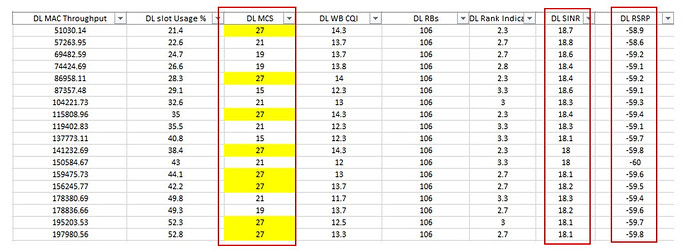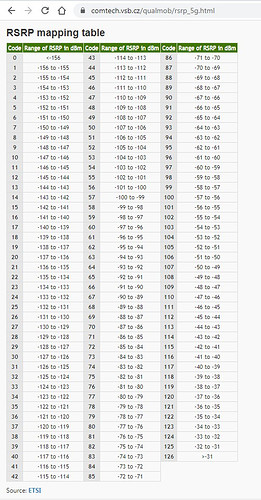Hi Experts,
Why do we have different throughput with same RSRP/SINR in 5G?
Same RSRP/SINR but NR throughput fluctuate…
What is the reason behind this?
Vendor is Nokia.
Check the load.
If RSRP is too high like > -50 dBm it will saturate the UE receiver.
And so throughput will fluctuate even RSRP and SINR are constant.
Can you please elaborate on this?
Becasue most IBS sites will have very good RSRP.
@RFSpecialist, I have the same question OF @eta004 , because this is a very common situation to have in case of IBS.
RSRP range is up to -40 dBm as per 3GPP.
But as you get closer to this value the UE will get saturated.
MCS fluctuates due to very strong RSRP.
Should be MCS stable at 27 but instead it fluctuates due to a very strong rsrp that saturates (cuts-off) the UE receiver.
Cant we consider this as a limitation of certain handset chipsets?
Not all h/s might have this behaviour?
Every receiver has a dynamic range of operation.
Even if UE transmitting too high power for control channels can cause MCS fluctuations.
Because link adaption also take ACK/NACK into account.
I was just explaining one of the causes why throughput fluctuates in a stable SINR and stable RSRP, in my opinion. (MCS fluctuation causes)
Great, and I just want to share my observations in testing.
Always appreciate you for the information you provide to us. 
See a case from 5G:
RSRP in 5G goes to up to -31 dBm (https://comtech.vsb.cz/qualmob/rsrp_5g.html):
This UE saturation I guess it depends much on UE type, vendor, chipset (Exynos, Qualcomm, Dimensity, Balong, etc)
Why LTE is minus 140 and NR is minus 160?
Any specific reason like some throughput can be achieved with such poor coverage level?
For RSRP range.
I think this is designed to cover enhanced coverage scenarios which are applicable to IoT devices.
You can also check my article on RSRP mappings for 5G:
Mainly I guess due to different UE because SINR mapping (PMI) reports to gnode/enodeB is different.
Assume one UE with low SINR can get average MCS but on the other hand another UE will get low MCS…
Yes right. Lower RSRP levels introduced in NR to address IoT devices, which can be experiencing lower signal stengths.
No load yet found.
RSRP is -70 dBm.
I am facing different. My SINR is on medium condition with good RSRP but throughput go from 70 to 10 Mbps.
Check your DCI percentage.
You do not get 100% scheduling rate.
You may have Transmission issue in site, or packet loss.
That’s what I want to check.
Because it is one road. If you drive from left to right I am getting 70 Mbps but the other way it reach to low, and customer is not accepting this.

